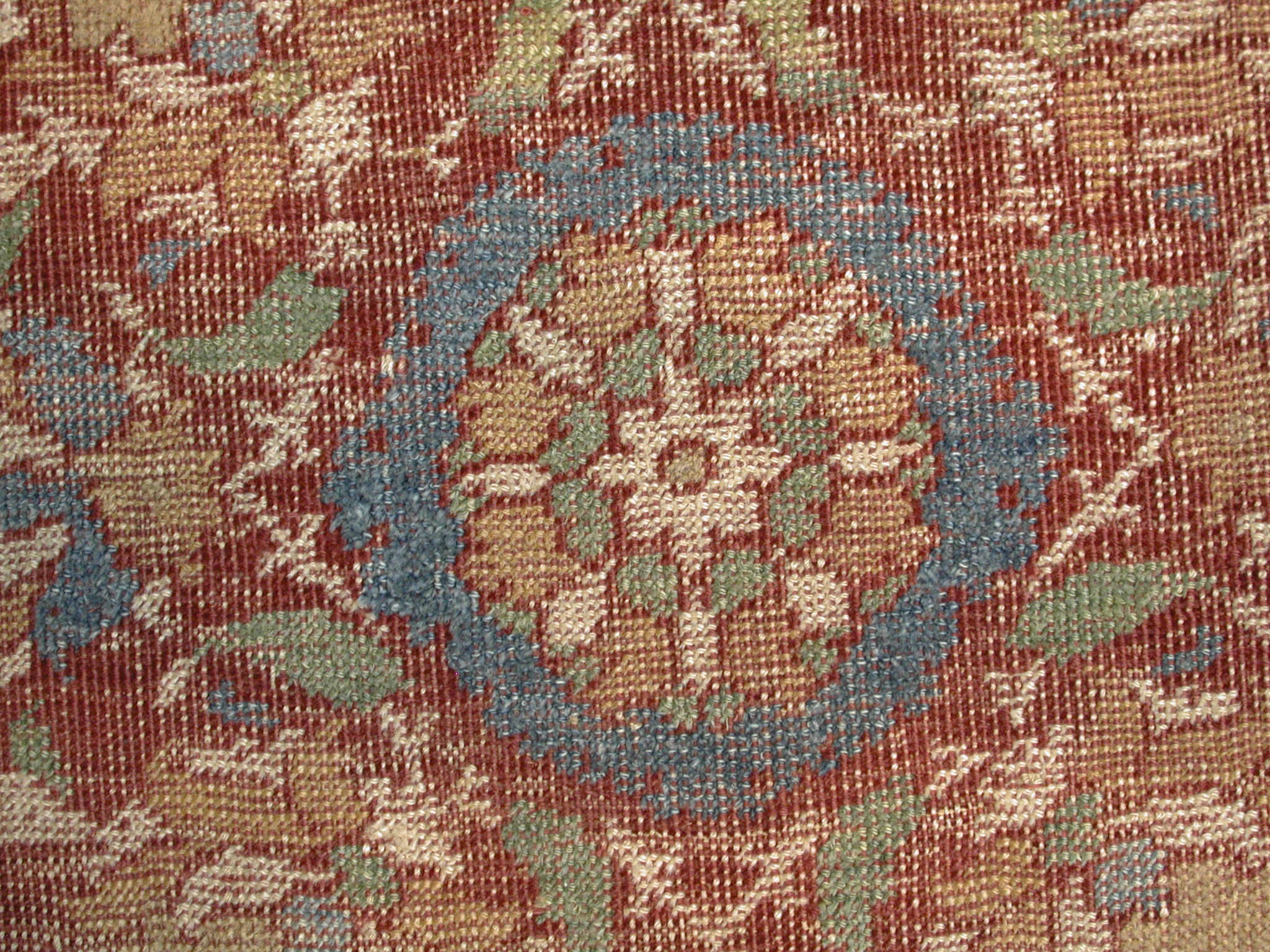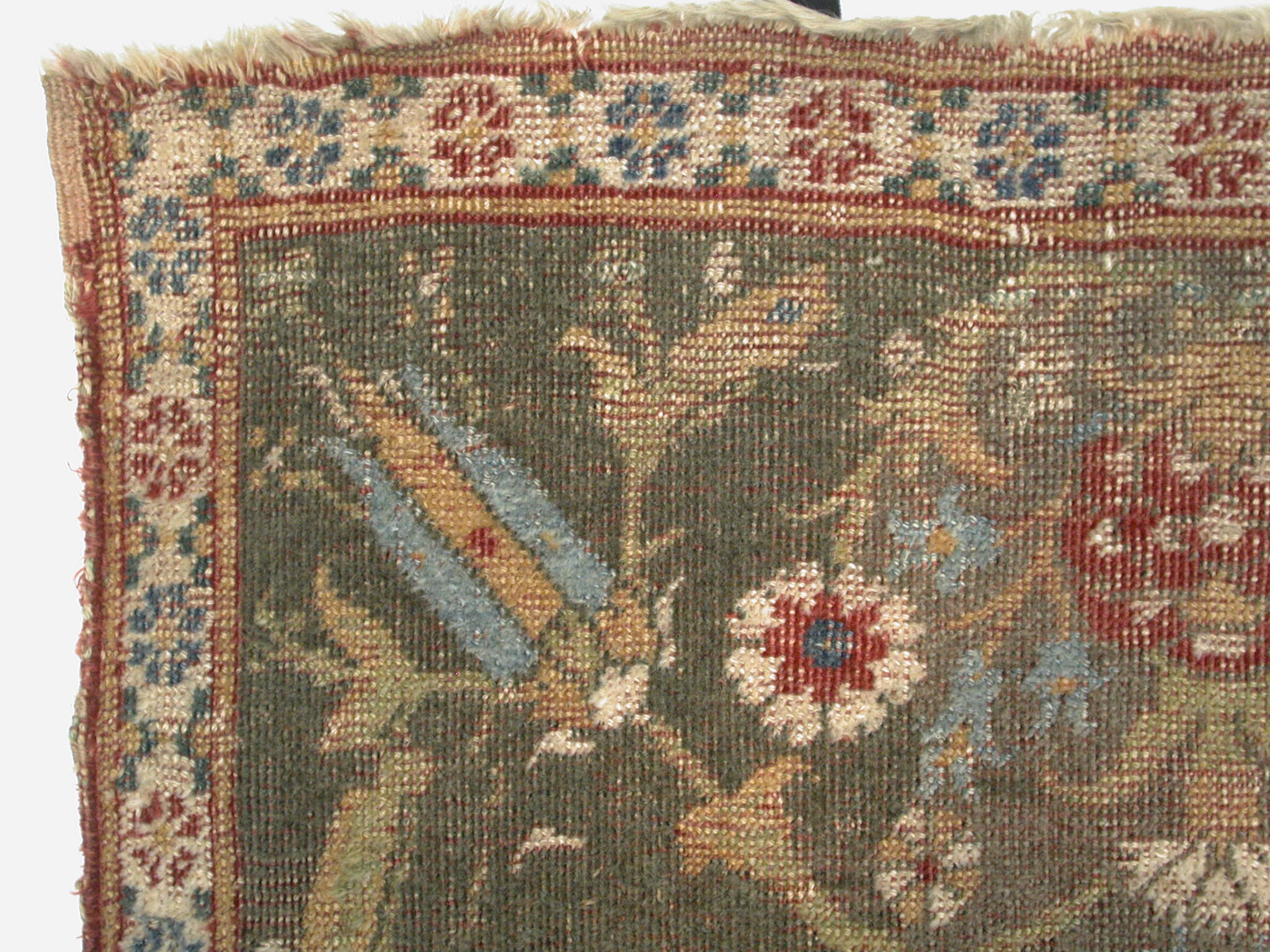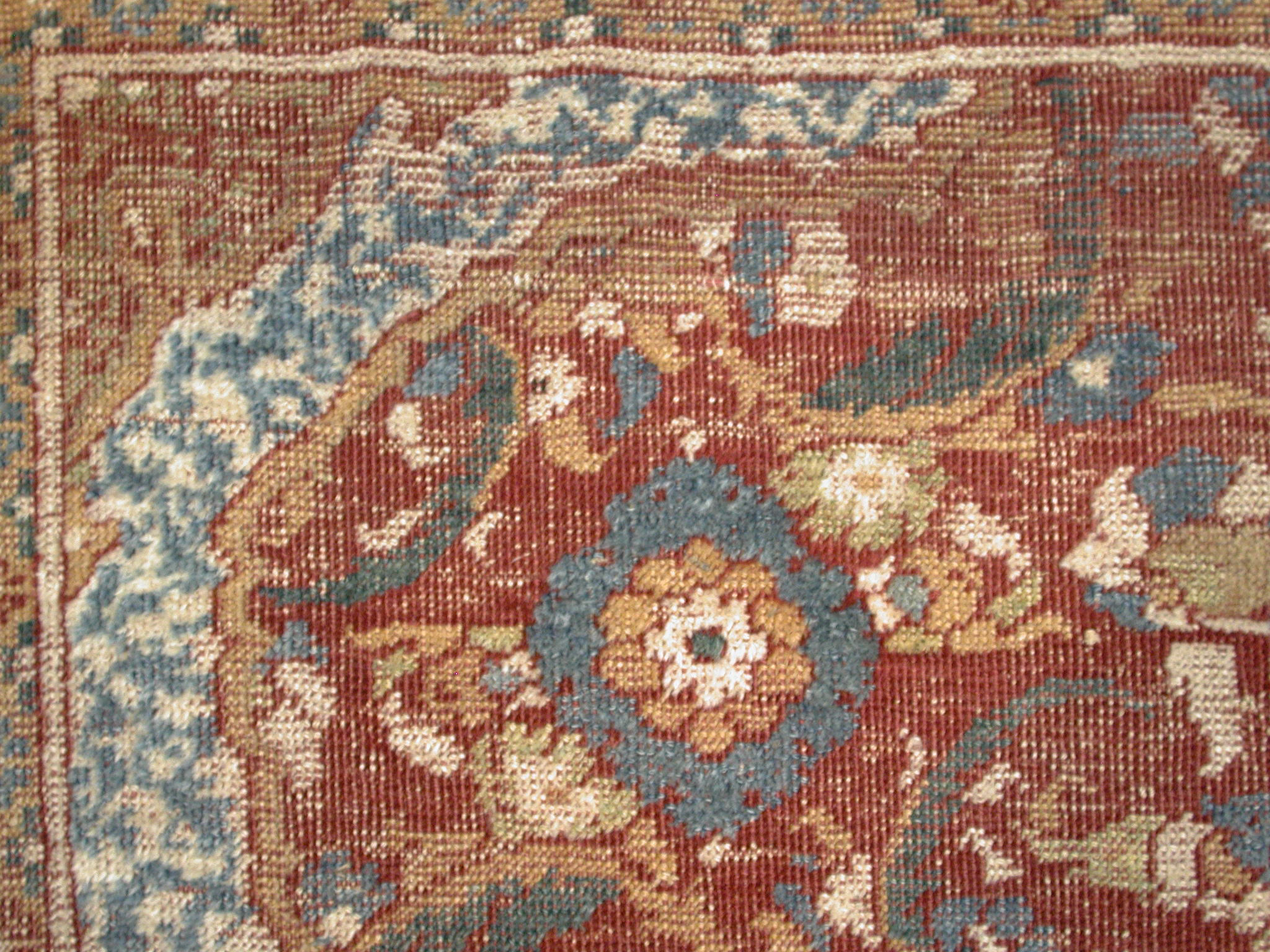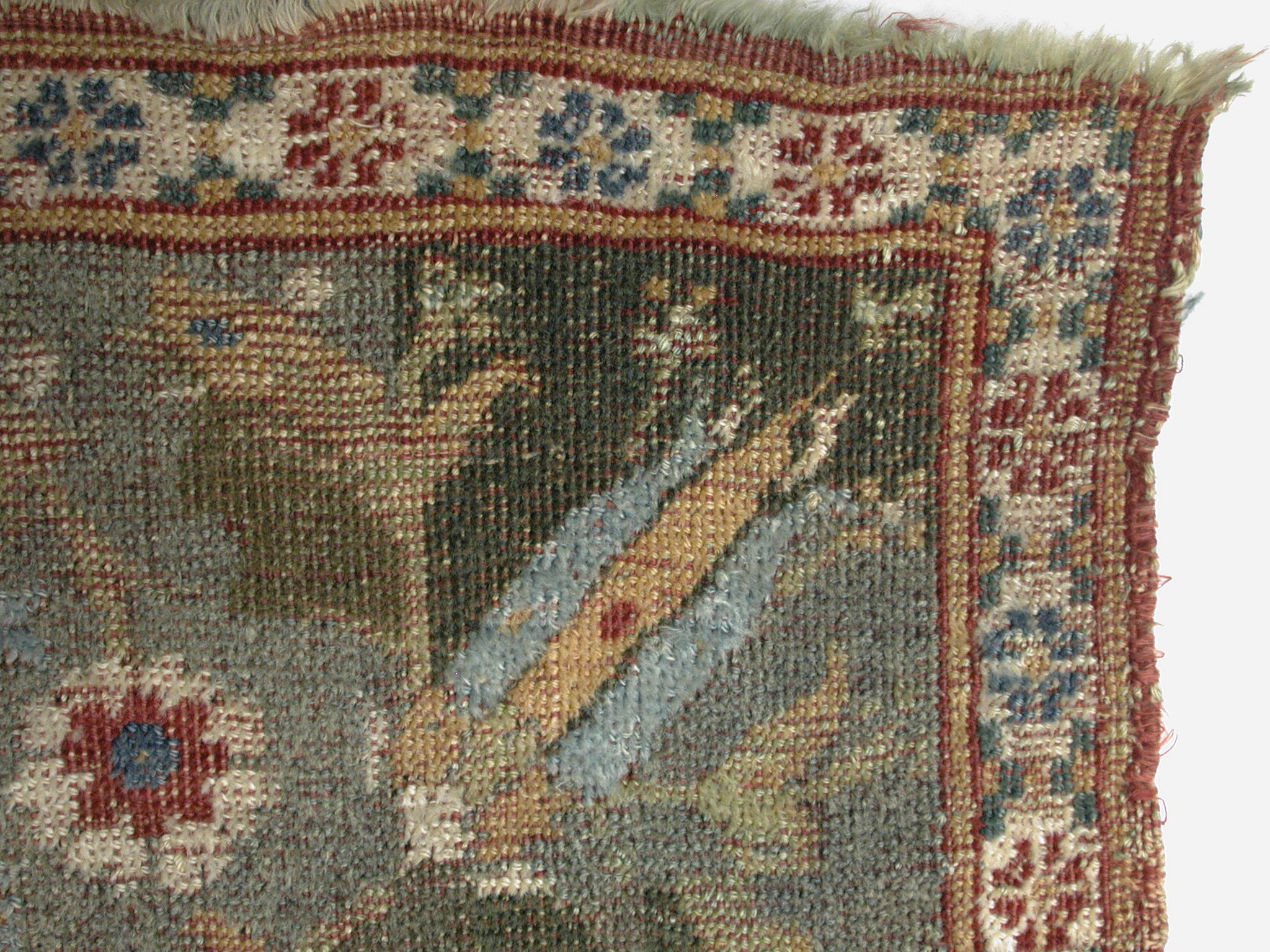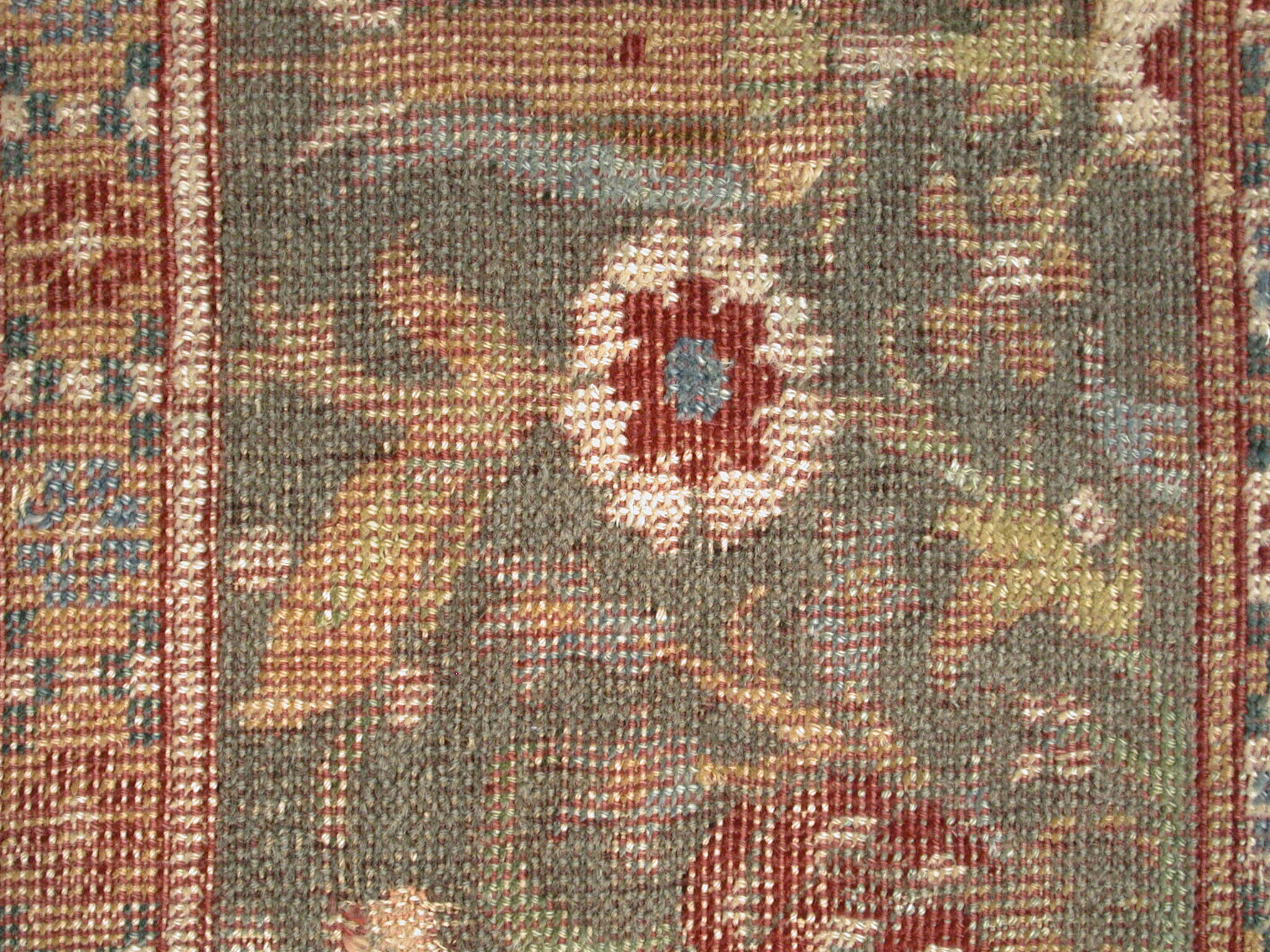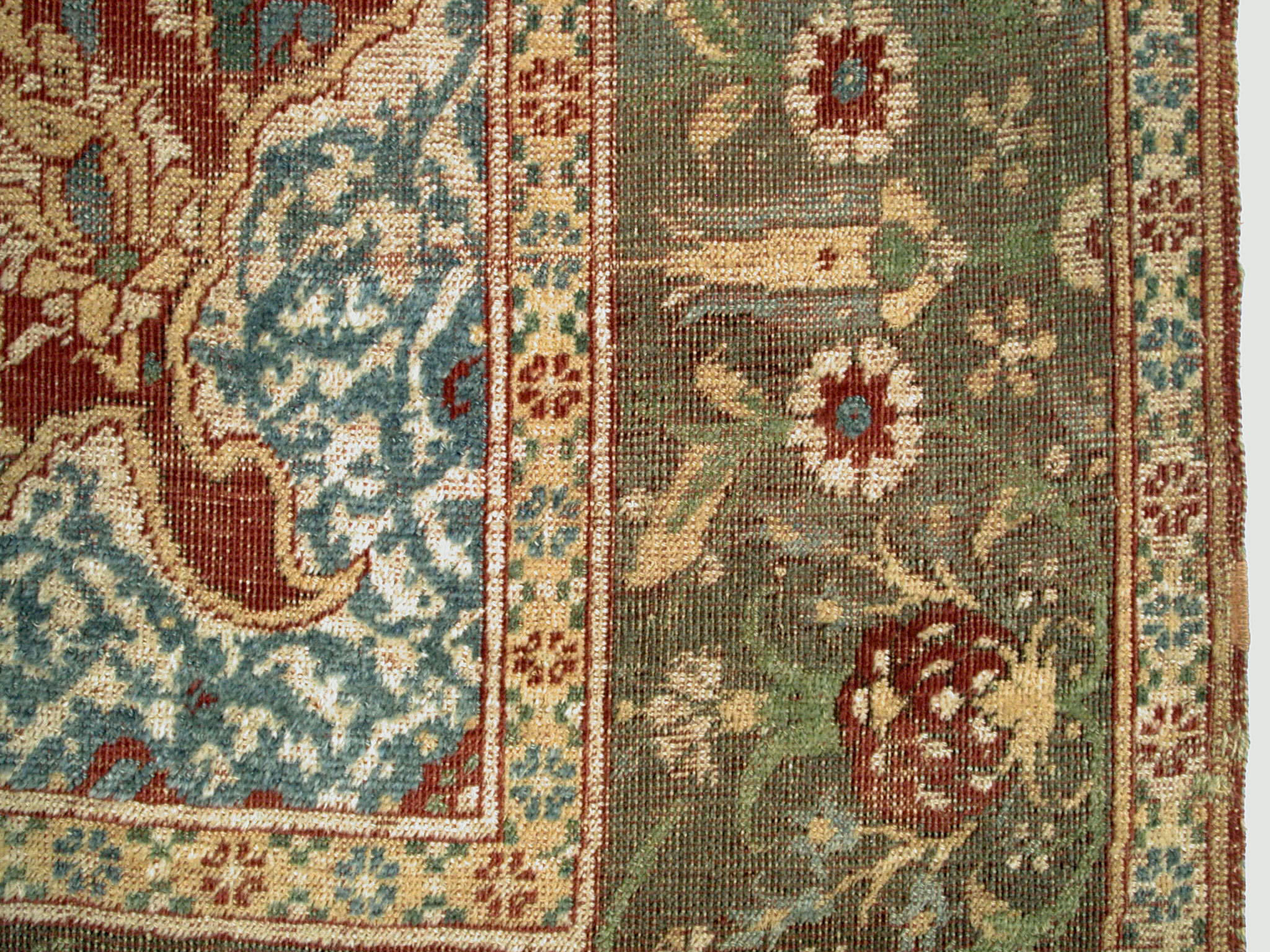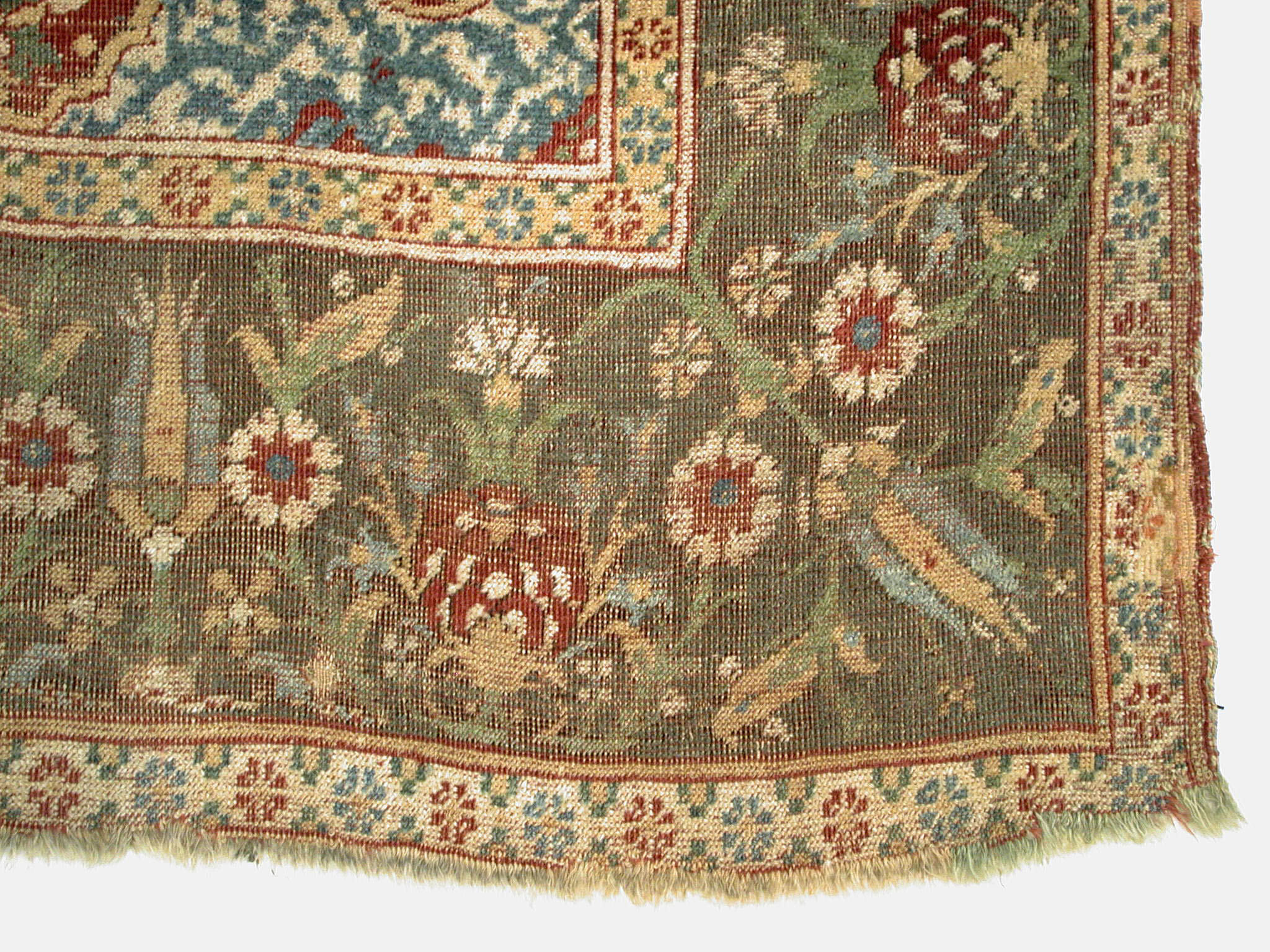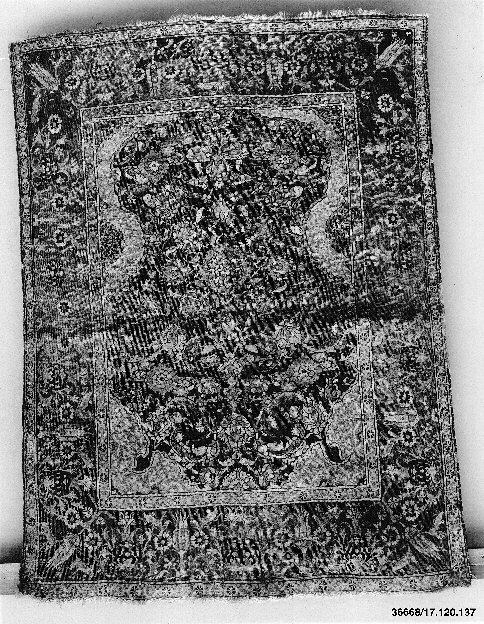Carpet
Not on view
The scalloped horseshoe arch and overall floral field are characteristic of a small group of Ottoman rugs. Some, with all-wool construction, are thought to come from Cairo, a well-established rug-weaving center when it was conquered by the Ottomans in 1517. While continuing the use of the Senneh or Persian knot and limited palette of colors of the geometric patterned carpets made under Mamluk rule, the Cairo weavers employed totally Ottoman elements in their designs. In the center of the field is a configuration of a rosette type blossom surrounded by palmettes, a device which appears on many non-prayer rugs of the period and may have been adapted from them. The border is unusual for this type of rug and contains the Ottoman favored flowers–tulips, hyacinths, and carnations. The double flowers appearing at the top and bottom center of the border may be the result of a not well-planned design. The guard stripe pattern is a popular one appearing on many rugs of this group.
Due to rights restrictions, this image cannot be enlarged, viewed at full screen, or downloaded.
This artwork is meant to be viewed from right to left. Scroll left to view more.


